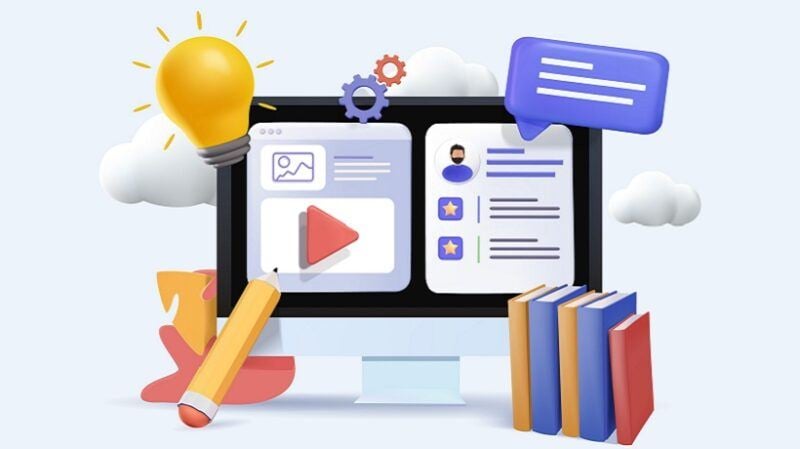
Online Course Design
The online course design and development process involves a variety of considerations, including the selection of appropriate learning technology, the development of interactive and multimedia elements, and the creation of assessments and other forms of student engagement. In this article, we will explore some of the key considerations and best practices for designing and developing online courses.
The Online Course Design And Development Process
One of the first steps in online course design and development is to define the learning objectives for the course. This involves identifying the knowledge and skills that students should acquire as a result of taking the course, and organizing the content and activities in a way that helps students achieve these objectives. It is also important to consider the needs and characteristics of the target audience for the course, as this can inform decisions about the level of difficulty, the pacing of the course, and the types of resources and materials that are included.
Once the learning objectives and target audience have been identified, the next step is to select the appropriate learning technology. This can include choosing a Learning Management System (LMS) to host the course content, as well as other tools and platforms that will be used to deliver the course material. It is important to consider factors such as the cost of the technology, its compatibility with the target audience’s devices and internet connections, and the level of support and training that is available.
The development of interactive and multimedia elements is another important aspect of online course design and development. These elements can help to engage students and make the course more interactive and engaging. Examples of interactive elements include quizzes, discussions, and simulations, while multimedia elements might include videos, audio recordings, and interactive graphics. It is important to strike a balance between these elements, as too much of any one type can be overwhelming or distracting for students.
Assessment is another critical component of online course design and development. This can include both formative and summative assessments, which are used to evaluate student progress and understanding at different points throughout the course. Formative assessments might include quizzes and short assignments, while summative assessments might include longer exams or projects. It is important to consider the most appropriate types of assessments for the course and to provide clear guidelines and expectations for students.
Sense Of Community
In addition to the technical and content-related aspects of online course design and development, it is also important to consider how to create a sense of community and support among students. This can be achieved through the use of discussion forums, virtual office hours, and other mechanisms for student interaction and support. It is also important to provide support and guidance to students who may have difficulty accessing or navigating the course materials.
One way to foster a sense of community and support is through the use of collaborative learning activities. These can include group discussions, peer review, and teamwork exercises, which can help students to learn from one another and develop their problem-solving skills. Collaborative learning activities can also help to build relationships and create a sense of belonging among students, which can be especially important in an online setting where students may not have the opportunity to interact in person.
Another important aspect of online course design and development is the use of feedback and assessment to promote student learning. This can involve providing students with regular feedback on their progress and performance, as well as using a variety of assessment methods to gauge student understanding. It is important to provide timely and constructive feedback that helps students to identify areas where they need to improve, and provides guidance on how to do so.
Conclusion
Overall, the process of designing and developing online courses requires a combination of technical skills, pedagogical expertise, and an understanding of the needs and characteristics of the target audience. By considering these factors and incorporating a range of interactive and multimedia elements, it is possible to create an effective online course.
In conclusion, designing and developing an online course requires a significant amount of planning, organization, and attention to detail. It is important to carefully consider the learning objectives and target audience, and to structure the content in a way that is engaging and effective. The use of various multimedia elements, such as videos, images, and interactive activities, can help to make the course more dynamic and engaging for learners. It is also important to regularly review and update the course to ensure that it remains relevant and effective.
Originally published at www.unoassignmenthelp.com.
